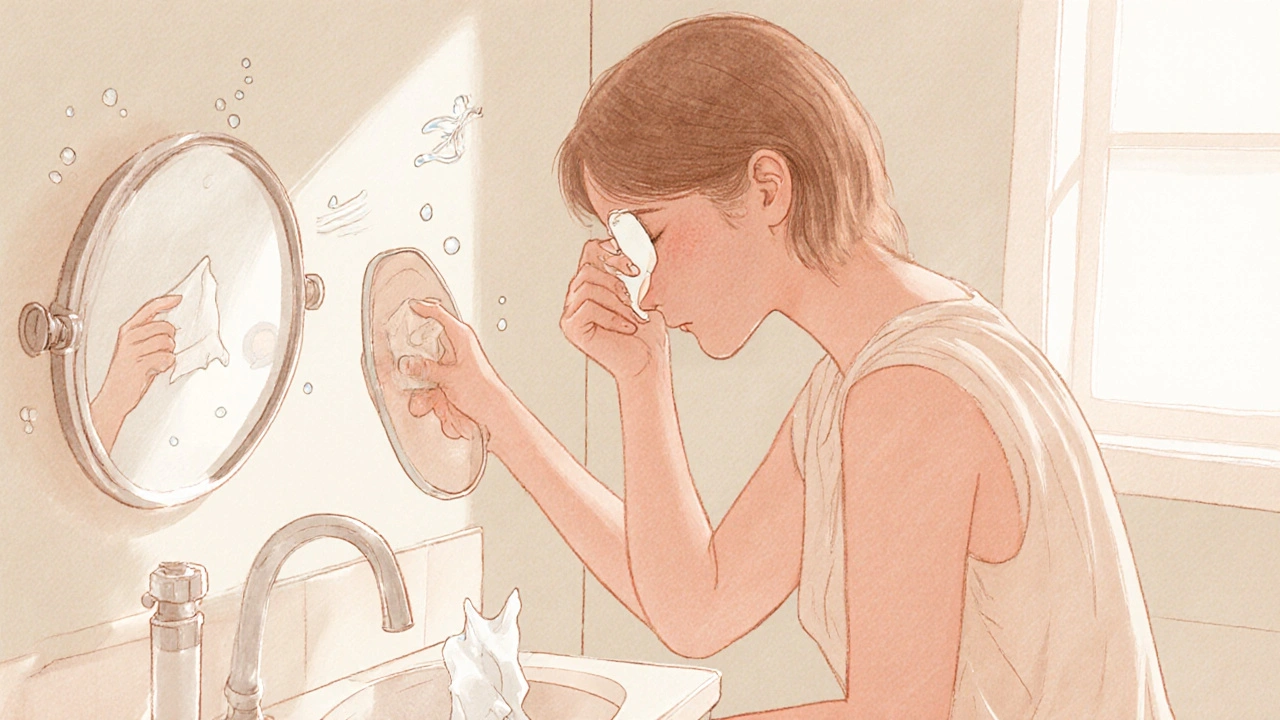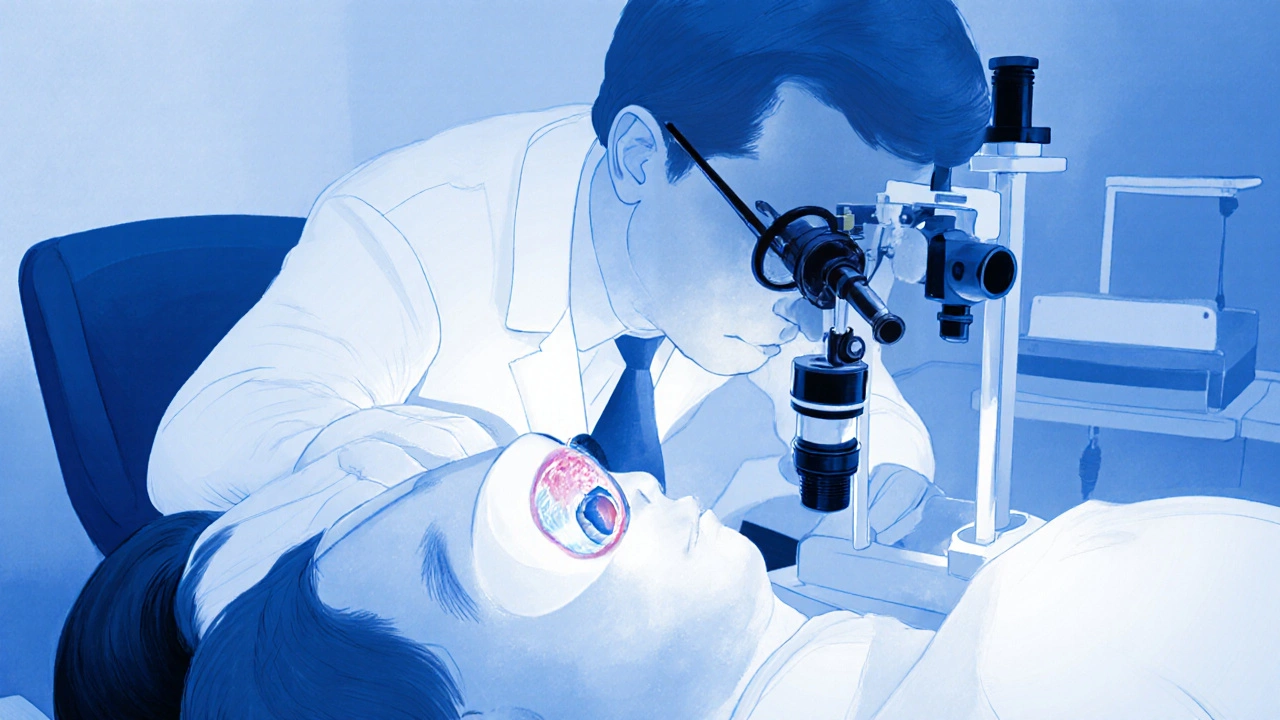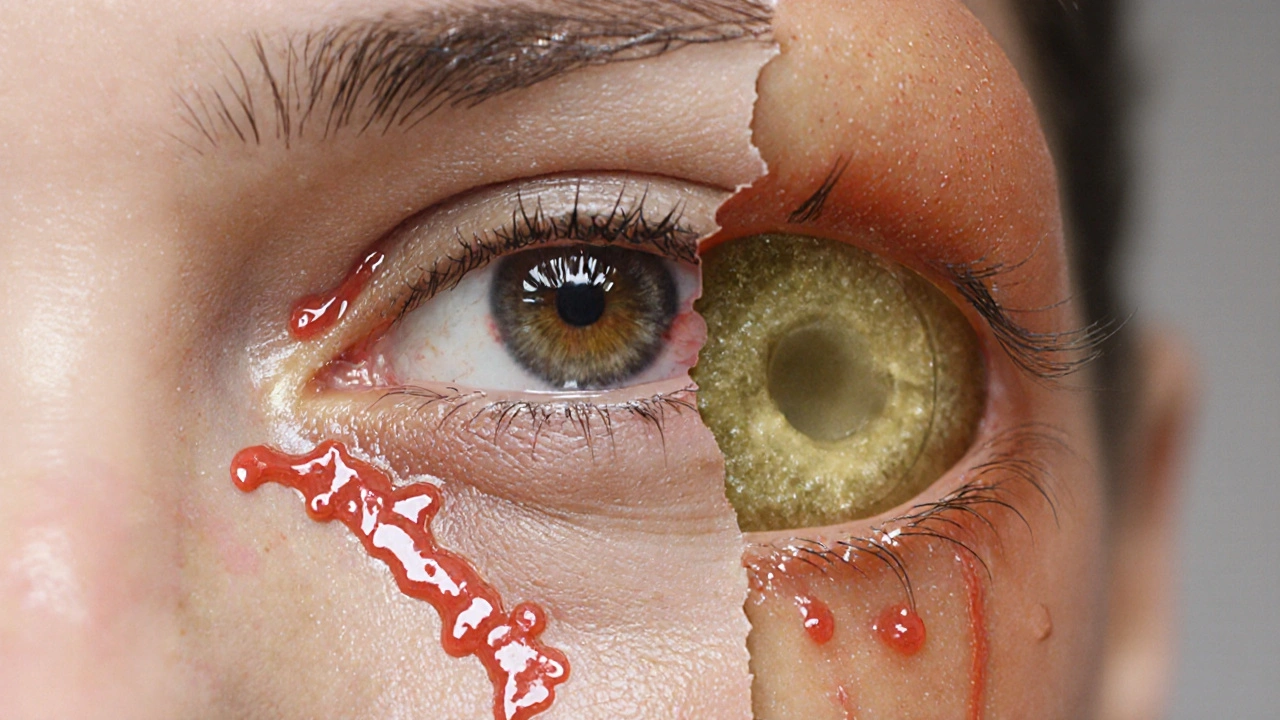Eye Redness Checker
Answer the following questions to determine whether your eye redness is likely caused by an allergy or an infection.
When your eyes turn bright red, the first thought is often "what's wrong?" The cause could be a harmless allergy or a more serious infection, and telling them apart early can save you a lot of discomfort. Below you’ll learn the tell‑tale signs, quick self‑checks, and when it’s time to call a professional.
Key Takeaways
- Allergy‑related redness usually itches, is watery, and appears with other allergy cues.
- Infection‑related redness often brings pain, thick discharge, and may affect vision.
- A short checklist can help you decide whether to use over‑the‑counter drops or see an ophthalmologist promptly.
- Both conditions can be managed at home, but improper use of antibiotics for allergies can worsen resistance.
- Prevention starts with hygiene and awareness of common triggers like pollen or contact lenses.
What Triggers eye redness?
Redness is a symptom, not a disease. It shows up when tiny blood vessels on the surface of the eye dilate. The most common culprits are:
- Environmental allergens - pollen, dust, pet dander.
- Microbial invaders - bacteria, viruses, fungi.
- Irritants - smoke, chemicals, dry‑air air‑conditioners.
- Physical factors - contact lens wear, eye rubbing.
Understanding the source helps you pick the right remedy.
Allergy‑Related Redness
Allergy is a hypersensitive immune response to harmless substances. When allergens contact the eye’s surface, mast cells release histamine, causing the classic itchy, watery eye.
- Itchiness: The urge to rub is strong and often spreads to the nose.
- Watery discharge: Clear or slightly milky fluid that drips down.
- Sneezing, nasal congestion: Often present alongside eye symptoms.
- Seasonal pattern: Worse during pollination peaks or after cleaning.
Allergic reactions rarely produce thick pus or intense pain.

Infection‑Related Redness
Infection occurs when pathogens multiply on the ocular surface, inflaming tissues and sometimes spreading to nearby structures.
- Pain or gritty feeling: A sensation that something is in the eye.
- Thick, colored discharge: Yellow, green, or white pus that may crust over.
- Swelling of eyelids: Noticeable puffiness, sometimes tender to touch.
- Vision changes: Blurred or double vision if the infection spreads.
- Fever or general malaise: Systemic signs can accompany severe infections.
The most common forms are bacterial conjunctivitis and viral conjunctivitis, both medically termed conjunctivitis.
Spotting the Differences: A Practical Checklist
- Ask yourself: Do my eyes itch more than they hurt? If yes, think allergy.
- Check the discharge: Is it clear and runny or thick and colored? Clear points to allergy; colored points to infection.
- Look for additional symptoms: Sneezing, runny nose, or seasonal patterns suggest allergy. Fever, sore throat, or recent contact with someone sick suggest infection.
- Touch the eyelids: Are they puffy but not tender? Likely allergy. Tender, warm, or swollen lids often mean infection.
- Assess vision: Any blurriness? If vision is affected, prioritize a medical review.
If you cross two or more infection markers, book an appointment. If allergy signs dominate, you can usually start home care.
When to Seek Professional Help
Even if you suspect an allergy, see an eye‑care professional when:
- Redness lasts more than a week despite over‑the‑counter drops.
- Pain, light sensitivity, or visual disturbances appear.
- Discharge becomes thick, yellow, or green.
- You wear contact lenses and notice any irritation.
- You have a weakened immune system (diabetes, chemotherapy, etc.).
An ophthalmologist can perform a slit‑lamp exam, culture the discharge, and prescribe the right medication.

Quick Treatment Options
For allergies, the first line is antihistamine or mast‑cell stabilizer eye drops.
- Antihistamine eye drops relieve itch and reduce redness within minutes.
- Cool compresses for 5‑10 minutes, three times daily, soothe swelling.
- Artificial tears (preservative‑free) dilute allergens and flush out irritants.
For infections, antibiotics or antiviral agents may be needed.
- Antibiotic eye drops (e.g., a fluoroquinolone) treat bacterial conjunctivitis.
- Viral cases often resolve on their own; lubricating drops and hygiene are key.
- Never use antibiotic drops for allergy‑only redness - they won’t help and can foster resistance.
| Feature | Allergy‑Related Redness | Infection‑Related Redness |
|---|---|---|
| Primary sensation | Intense itch | Gritty pain |
| Discharge type | Clear, watery | Thick, yellow/green pus |
| Eyelid swelling | Soft, non‑tender | Warm, tender, may crust |
| Associated symptoms | Sneezing, runny nose, seasonal pattern | Fever, malaise, possible respiratory infection |
| Typical duration | Hours to few days (if trigger removed) | 5‑7 days untreated; may extend |
| First‑line treatment | Antihistamine drops, cool compress | Antibiotic drops (bacterial) or supportive care (viral) |
Preventive Tips
- Wash hands frequently; avoid touching the eyes.
- Use hypoallergenic, preservative‑free eye drops during high pollen seasons.
- Replace contact lenses as directed and disinfect cases daily.
- Keep sunglasses handy to shield eyes from wind and pollen.
- Maintain a clean bedroom - dust‑mite covers and regular vacuuming lower indoor allergens.
Frequently Asked Questions
Can I use over‑the‑counter eye drops for both allergy and infection?
Over‑the‑counter antihistamine drops help allergic redness but do nothing for bacterial infections. Using antibiotic drops without a diagnosis can lead to resistance. Choose the product that matches the underlying cause.
Is pink eye always contagious?
Only the infectious forms-bacterial and viral conjunctivitis-are contagious. Allergic pink eye is not spread to others.
How long should I wait before seeing a doctor?
If symptoms persist beyond 48‑72hours, worsen, affect vision, or are accompanied by pain or fever, schedule an appointment promptly.
Are there natural remedies that work for eye allergies?
Cold compresses, staying hydrated, and rinsing eyes with sterile saline can ease symptoms. However, they complement-not replace-antihistamine drops when itch is severe.
What should I do if I wear contact lenses and develop redness?
Remove the lenses immediately, clean them thoroughly, and switch to glasses until the eye clears. If redness continues, seek professional care.


Marc Clarke
October 7, 2025 AT 14:08Even if you’re not sure, a quick glance at the checklist can save you a trip to the doctor. If the itching beats the pain, you’re probably looking at an allergy. A cool compress and some antihistamine drops usually do the trick. Keep an eye on how long it lasts – if it’s more than a week, get it checked.
angelica maria villadiego españa
October 14, 2025 AT 12:48I know how uncomfortable red eyes can be, especially when they’re itchy and watery. It’s good you’ve got a clear guide to tell the difference. Simple steps like avoiding rubbing and using preservative‑free drops can help a lot.
Ted Whiteman
October 21, 2025 AT 11:28When the eyes turn the color of a blood‑moon, the drama doesn’t stop at the surface.
It feels like a tiny warzone, with blood vessels expanding like angry soldiers.
Allergy lovers whisper that it’s just a seasonal nuisance, but the itching can be relentless.
Infection, on the other hand, brings a gritty sandpaper feeling that makes you think the world is crushing you.
The discharge can turn from a harmless tear to a thick, poisonous slime that stains your cheek.
Suddenly, a simple blink becomes a battlefield of comfort versus pain.
Your eyelids may swell like puffy clouds, but the tenderness tells you something sinister is lurking.
A fever may knock on the door, reminding you that the infection has ambitions beyond the eye.
Contrast that with the sneezing symphony of allergies, where the nose joins the chorus.
Both conditions demand attention, yet they dance to opposite tunes.
Ignoring the signs is like walking into a storm without an umbrella.
Your contact lenses become hostile strangers, begging for a break.
A cool compress is a fleeting peace treaty in the allergy skirmish.
Antibiotic drops are the heavy artillery reserved for the bacterial invaders.
But overusing them on mere allergies fuels a silent rebellion of resistance.
So, heed the checklist, respect the body’s signals, and call a professional before the drama escalates into a full‑blown tragedy.
Dustin Richards
October 28, 2025 AT 10:08The distinction between allergy‑induced and infection‑related redness is clinically significant, and the provided checklist serves as a practical triage tool. Should you observe persistent pain or a colored discharge, seeking ophthalmologic evaluation promptly is advised.
Vivian Yeong
November 4, 2025 AT 08:48Allergy symptoms rarely produce thick pus, so clear discharge points away from infection.
suresh mishra
November 11, 2025 AT 07:28Check the discharge type first: clear suggests allergy, yellow‑green suggests infection. Follow with appropriate drops-antihistamine for allergies, antibiotics for bacterial cases.
Reynolds Boone
November 18, 2025 AT 06:08The symptom pattern you described-itchy eyes with watery discharge-aligns well with seasonal allergens, whereas any warmth or tenderness around the lids often hints at infection.
Angelina Wong
November 25, 2025 AT 04:48Great job using the checklist; it’s a solid first step toward relief.
Keep an eye on how quickly your symptoms improve after antihistamine drops; rapid calming means you’re likely dealing with allergies.
If the redness lingers beyond a few days, don’t hesitate to book an appointment.
Remember, consistent hygiene and proper lens care are your best defense.
Anthony Burchell
December 2, 2025 AT 03:28Some people swear that any redness is an infection, but the itch‑to‑scratch ratio tells a different story.
In many cases the clear, watery flow is just the eyes flushing out allergens, not a bacterial invasion.
Michelle Thibodeau
December 9, 2025 AT 02:08In the tapestry of ocular health, each thread of symptom weaves a story that is both personal and universal.
When the breeze carries pollen, our eyes become the unsuspecting canvases for nature’s artistic flair.
The sudden urge to rub, the gentle sting of irritation, and the cascade of clear tears paint a vivid portrait of allergic response.
Conversely, a bacterial visitor brings a palette of thicker hues, turning the once‑crystalline tears into a murky watercolor.
Such discoloration, often yellow or green, signals that the body is rallying its defenses, recruiting white blood cells to the frontline.
It is essential to listen to the subtle cues-whether the eyelids feel plush and tender like a soft pillow or inflamed and hot as a summer road.
Vision clarity, too, serves as a lighthouse, guiding us toward the correct diagnosis.
If the world blurs, we must not ignore the siren call of professional care.
Preventive measures, such as diligent hand‑washing and mindful lens hygiene, act as the gentle rain that washes away potential irritants.
Seasonal awareness, like tracking pollen counts, empowers us to pre‑emptively shield our delicate ocular windows.
While over‑the‑counter drops offer immediate comfort, they are but temporary bridges across the river of discomfort.
Ultimately, honoring our bodies by distinguishing between itch‑driven allergies and pain‑laden infections ensures that we apply the right remedy, preserving both sight and serenity.